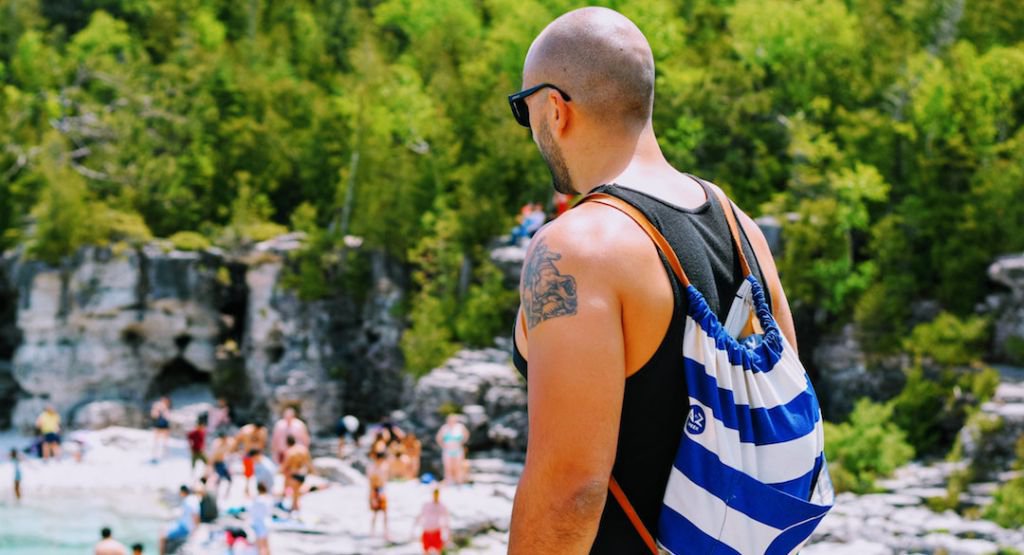
Over the years, Natasha Bhuyan, a Phoenix doctor, has treated countless cases of heat-related illnesses. That’s why she wasn’t surprised when a towering man showed up to her office feeling weak and wiped out from a day outdoors. But the patient himself was a little embarrassed. “He used to be an athlete and is a bigger guy, so he felt silly even seeing me,” she says. “But he drank a moderate amount of alcohol with friends — the amount he’s used to — and felt nauseated for days. He became far more ill due to the unexpected warm weather and dehydration.”
Bhuyan is describing heat exhaustion, a common occurrence in Phoenix. But heat-related illnesses can happen just about anywhere and to anyone. In some cases, spending too much time in high temperatures (hot yoga anyone?) or exercising excessively can trigger heat exhaustion. In more severe cases, overexertion and high temperatures can cause a serious and life-threatening condition known as heat stroke.
Know the Difference Between Heat Stroke and Heat Exhaustion Symptoms
Children under four years of age and adults over 65 are at increased risk, but according to the Centers for Disease Control and Prevention (CDC), even young and healthy people can develop heat-related illnesses if they’re doing something strenuous like running, yard work or hiking in hot weather. Sudden exposure to heat during an unexpected heat wave or travel to a hotter climate can lead to problems too. Certain medications like antihistamines (like Benadryl) that reduce allergy symptoms or diuretics (like Diuril) that rid your body of sodium and water can increase your risk, as can chronic illnesses like heart or lung disease. Being obese, sedentary, or having a history of heat stroke can also increase your odds of getting overheated.

Natasha Bhuyan, MD
But how do you know the difference between heat exhaustion and heat stroke?
“Heat exhaustion is when someone feels sick due to loss of salt and water from heat exposure,” Bhuyan says. “People may feel their heart racing, be nauseated, sweaty, or weak, but their body temperature usually stays below 104 degrees Fahrenheit (40 degrees Celsius).”
But when the thermometer goes above 104 degrees, things really get risky. That means your body is overheated and you’re experiencing heat stroke, a serious condition that requires emergency medical treatment. If left untreated, it can cause significant damage to the brain, heart, and kidneys. The longer treatment is delayed, the worse the damage can be. That’s why it’s so important to know the signature symptoms of heat stroke:
- A body temperature of 104 degrees Fahrenheit (40 degrees Celsius) or higher
- Changes in your mental state or behavior including confusion, slurred speech, agitation, or seizures
- Nausea or vomiting
- Changes in how you sweat: If hot weather is the cause of heat stroke, your skin will feel hot and dry to the touch. If it’s brought on by strenuous exercise, your skin may feel moist
- Flushed skin
- Rapid or shallow breathing
Heat stroke can’t be solved with a home remedy: it requires emergency treatment. A medical professional will help cool your body to a normal temperature with a cold water bath, ice packs, a cooling blanket, or an evaporation technique to cool the skin.
The Best Ways to Prevent Heat Exhaustion and Heat Stroke
Heat-related illnesses can strike any time the weather heats up. To prevent both heat exhaustion and heat stroke, take these precautions:
- Stay hydrated to help your body sweat and maintain a normal temperature. Your water needs will vary depending on your activity level and geographical location, but the Institute of Medicine recommends a daily total of 3.7 liters (15 cups) for the average adult male and 2.7 liters (11 cups) for the average adult female.
- Wear light, loose clothes to allow your body to cool down properly.
- Protect against sunburn with a wide-brimmed hat, sunglasses and a broad-spectrum sunscreen with SPF 30 or more (sunburn affects your body’s ability to cool itself).
- Be cautious if you’re at an increased risk or take medications that can increase your risk — talk to your provider to understand how to manage your risk.
- Rest and stay indoors around air conditioning during the hottest parts of the day.
- Restrict strenuous outdoor activity to the early morning or late afternoons or evenings when it’s cooler outside.
- Limit your time working or exercising outside until you’re acclimated to the higher temperatures.
If you’re having a lesser heat emergency like heat exhaustion, try taking these steps before seeing a health care provider:
- Get into an air-conditioned space — it’s the No. 1 way to prevent heat-related illnesses, according to the CDC. So if you don’t have A.C. at home, find a shady spot with a fan or go to a mall or movie theater.
- Cover yourself with damp sheets or have someone spray you with cool water and a fan.
- Take a cool shower or bath or try soaking in a pond or stream if you’re outside.
- Drink plenty of cool beverages like water, coconut water or sports drinks (as long as you’re not on a low-salt diet) to replenish lost salt and water.
- Avoid sugary or alcoholic beverages — these will interfere with your body’s ability to control your temperature. Avoid very cold drinks too, since they can cause stomach cramps.
The One Medical blog is published by One Medical, a national, modern primary care practice pairing 24/7 virtual care services with inviting and convenient in-person care at over 100 locations across the U.S. One Medical is on a mission to transform health care for all through a human-centered, technology-powered approach to caring for people at every stage of life.
Any general advice posted on our blog, website, or app is for informational purposes only and is not intended to replace or substitute for any medical or other advice. 1Life Healthcare, Inc. and the One Medical entities make no representations or warranties and expressly disclaim any and all liability concerning any treatment, action by, or effect on any person following the general information offered or provided within or through the blog, website, or app. If you have specific concerns or a situation arises in which you require medical advice, you should consult with an appropriately trained and qualified medical services provider.